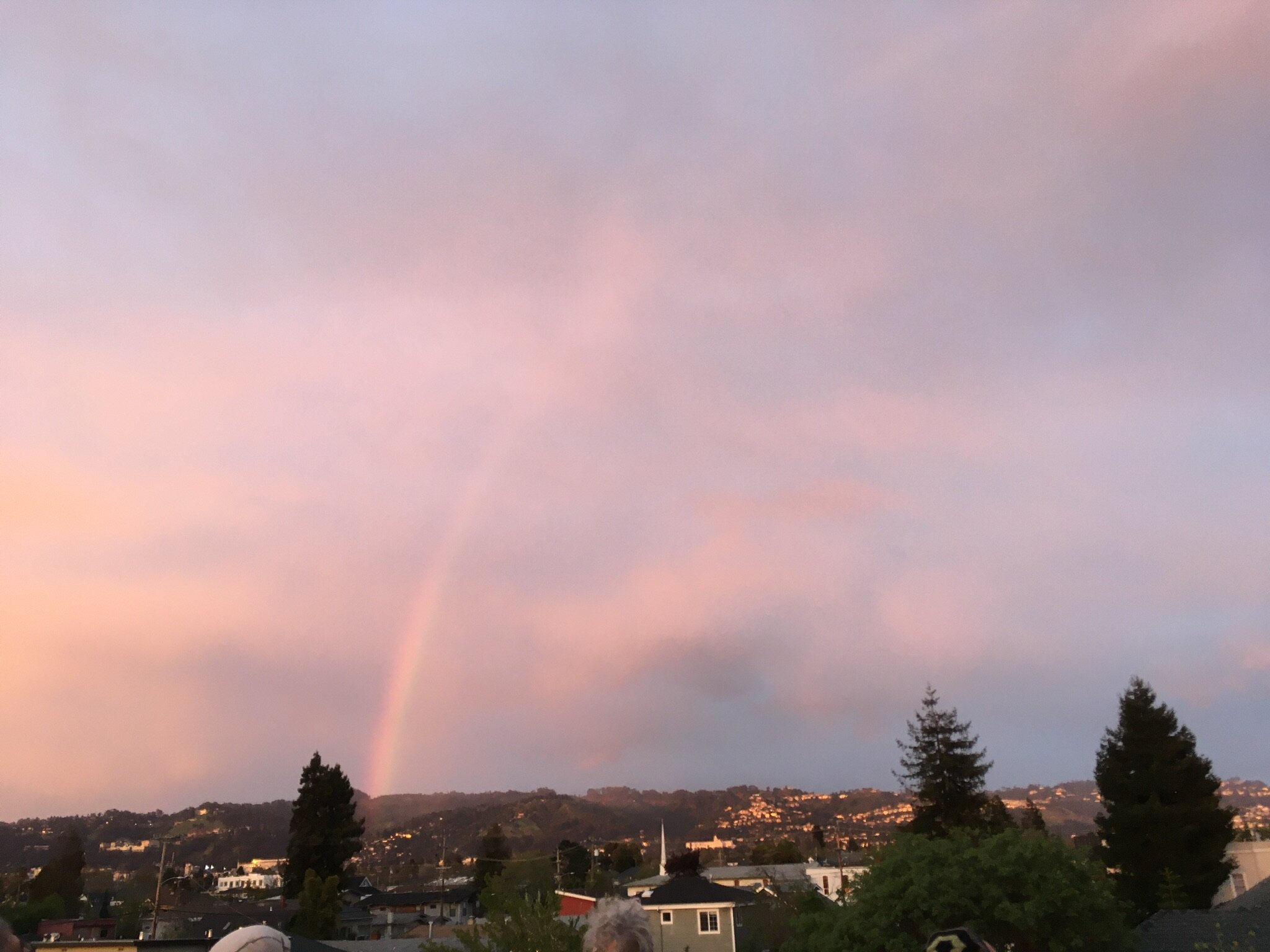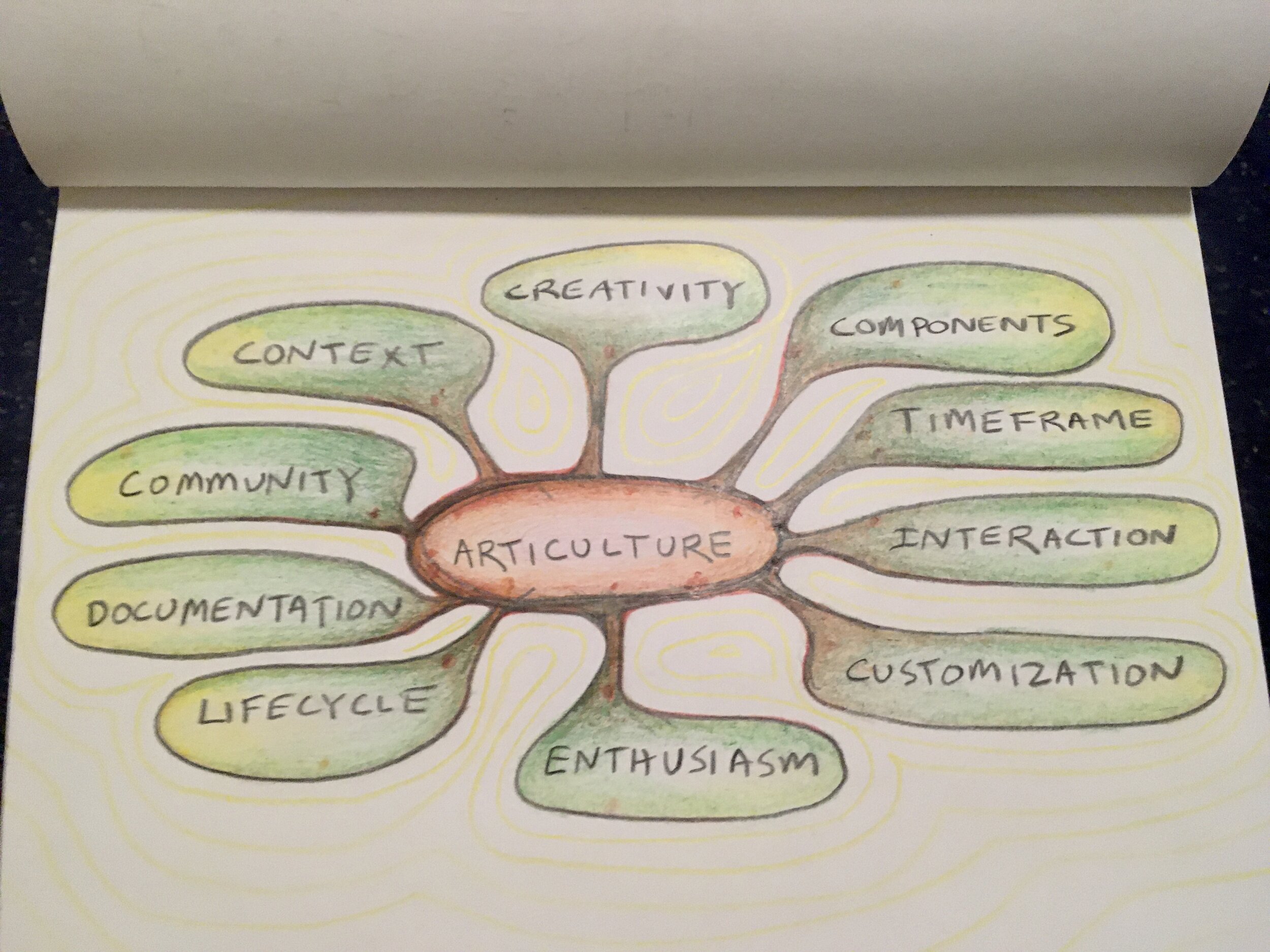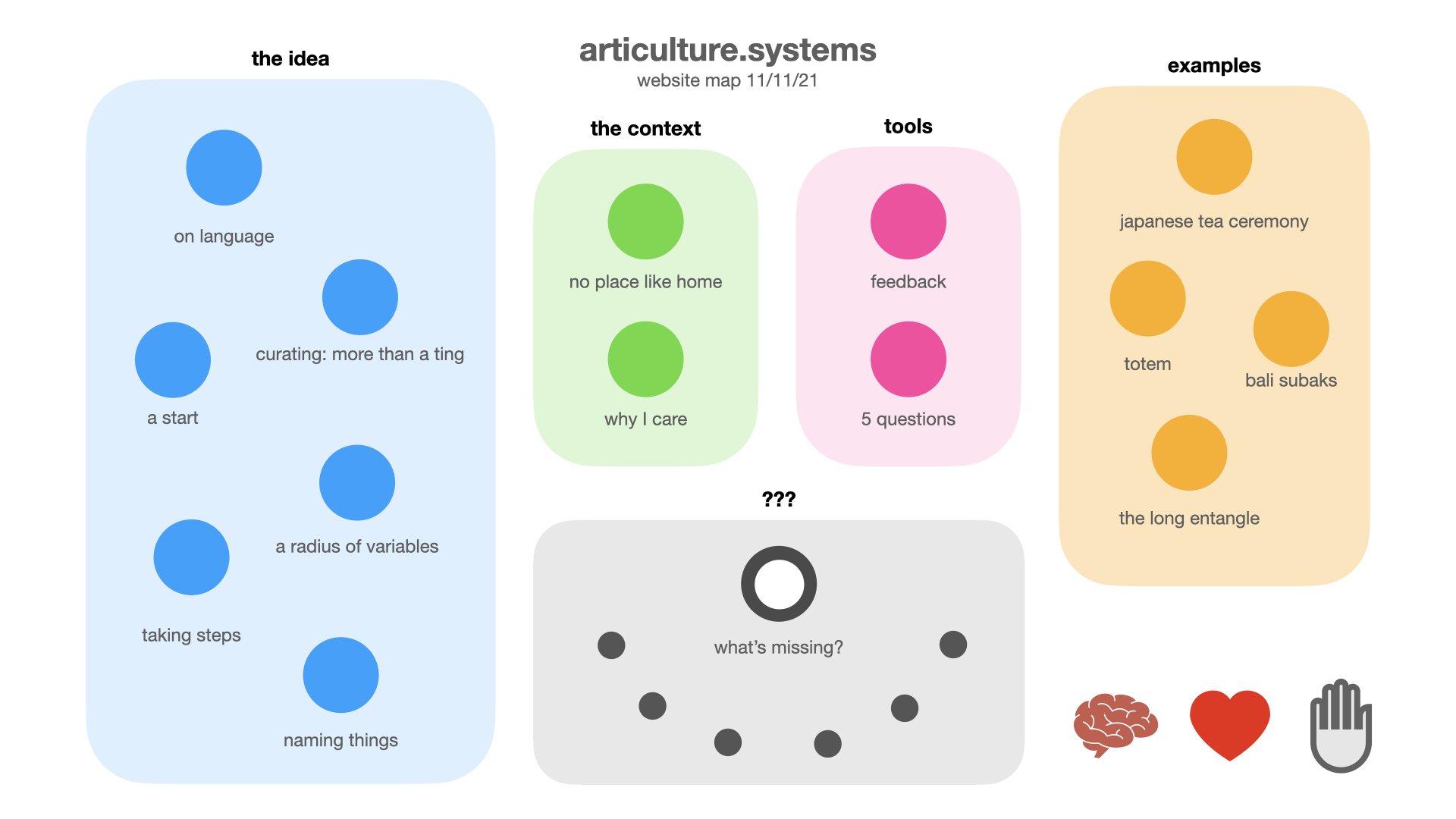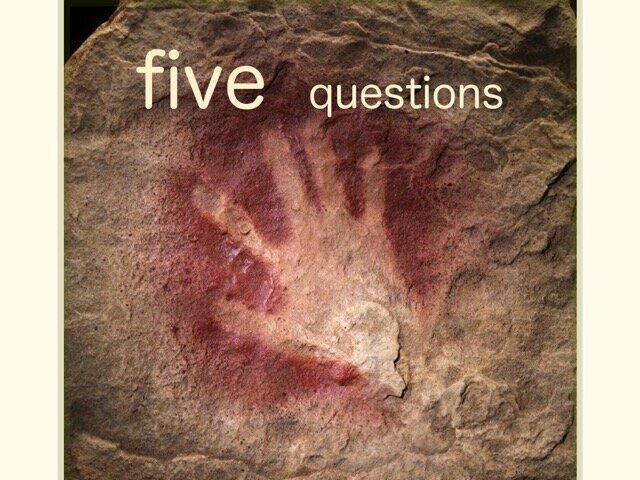
Popularizing a systems approach to culture will take a while. I’ve begun to sketch out a roadmap knowing it may take lifetimes to explore, create, and ground-truth at any scale.

a start
articulture.systems hopes to inspire with a simple idea: What might emerge if our cultural landscape was understood more as a system than as a collection of individual elements? This would apply at a personal scale, all the way up to a global scale. It’s about interconnection over separation.
I plan to explore this here, invite folks to consider the ramifications and see what emerges. If there’s greater interest in this, perhaps we can build up a body of thought, experience and practices to help us all cultivate a more resilient culture at a time when we urgently need something different. A systems approach could create space for collective action and accountability, particularly as it relates to social and ecological justice.
I’ve listed these as steps and I can imagine some sort of progression but realistically, they are likely to happen out of order and simultaneously as well. Please take this as a guide to some of the tasks involved. As things progress, I expect we’ll find others…

taking steps
(or at least writing about them)
I welcome suggestions and as always, would love to know about related resources or other people who might be researching this general topic. It seems like a gap, so I'm diving in. I did the same in 2000 when we started greenmuseum.org. Our hunch that environmental art was an emerging movement ready to dive into the mainstream worldwide proved accurate. Because of that, I was able to contribute to the field as a whole to some degree, which was fun/overwhelming.
I'm particularly interested now, in the lived experience making regenerative culture, ultra-low footprint, net-zero-carbon lifestyles attractive and resonant. I think the gift-ecology, off the grid, art and farming satyagranjero movements might have some insights here, as well as Homefulness urban freegan activists, integral nonviolence folks decolonizing white supremacy, patriarchy and other forms of oppression, people exploring traditional cultural roots and deep culture, engaged monastics and giftivists everywhere. For the bulk of human history people have been living holistically within their bioregional means. There’s really no end to the possibilities if we focus on interconnections instead of things…

radius of variables
A systems approach to art and culture inspires Sam’s nerdy side, and a number of potential variables emerge.
This is what I mean by these terms:
Creativity: Trying something new. Pushing the edges of innovation. Surprise us.
Components: How many elements are needed to make an effective system? Is it a diverse mix of elements engaging a range of senses? (See five questions)
Timeframe: How long will your interventions last? Is there a commitment to long range impacts or regenerative elements?
Interaction: How does your system begin to engage others? How much participation is possible, useful, realistic? …

a map
I’ve been reflecting on what this site is so far and what’s missing. I figure we have “head”, in the posts titled the idea, the context, and tools, “heart”, in the examples of art-systems and articulture that have so inspired this journey. We could certainly find more tools, more refinements to the idea and updates to my context as I learn more.
What I think is missing most from this site and is the weakest part of all this, currently, is the “hand” part of the head/heart/hand trio. How do we take this articulture idea and apply it practically to the world?…

five questions
People often ask for examples of how to think in terms of art systems. On this site, I’ve been most focused on systems people could actually bring home. The idea of a grouping of elements working together, however, can be independent of scale. The grouping thing is the systems concept – the scale issue is about strategy.
I came up with this list of questions several years ago. It’s a handy (✌) way to approach this idea. I like to use my hand as a mnemonic to keep track of the different elements. I memorize numbers that way too. I’ve seen farmers in rural areas use their hands and bodies to give directions and explain things. Teacher friends use similar techniques in grade school now when teaching songs. It’s kind of fun. (Note: those of you good at math might notice I’m not counting the first question below which starts the handful.)…

the protest alternative
Much has been said about protests and cultural events which sprout around large decision-making festivals, like those at the recent COP26. The corporations and dominant destructive power players control the discussion and framing to the extent that any side helping of art or protest, however well-meaning and brave, is likely still to barely get through to decision makers or have much impact at all on public awareness of the issues. It can be inspiring and educational for those involved, yet for many, each big event becomes yet another reason to stay home. Festivals, climate-themed art and clever prank-art, can educate us and wake us up to the need to do something. Yet, with these events and their associated commentary, how many people actually shift how they live to reflect these values? How long might these effects last?…

curating: more than a ting
If for Beuys, “everyone is an artist”, is everyone also a curator?
I'm interested in the ways elements of "culture" - everything from sculpture and painting to music and household crafts, cooking, theater and poetry - relate to each other, blend, support, riff, dance with people and place and sing with awareness of deep time and future generations.
In cities and colonized spaces where ties to preindustrial traditions are generally weaker, the role of cultural weaver is often in the hands of the "curator" or perhaps a "curatorial team". They apply these skills to institutions, museums, concert halls, parks, festivals, and even cafés, usually for a brief but intense period of time and then move on to the next theme or concern or location altogether. Sometimes an author or art critic may weave a bundle of ideas and images together in a written piece to make a point. Rarely, however, are these themes about helping people shift the way they actually live in a sustained or multigenerational way…